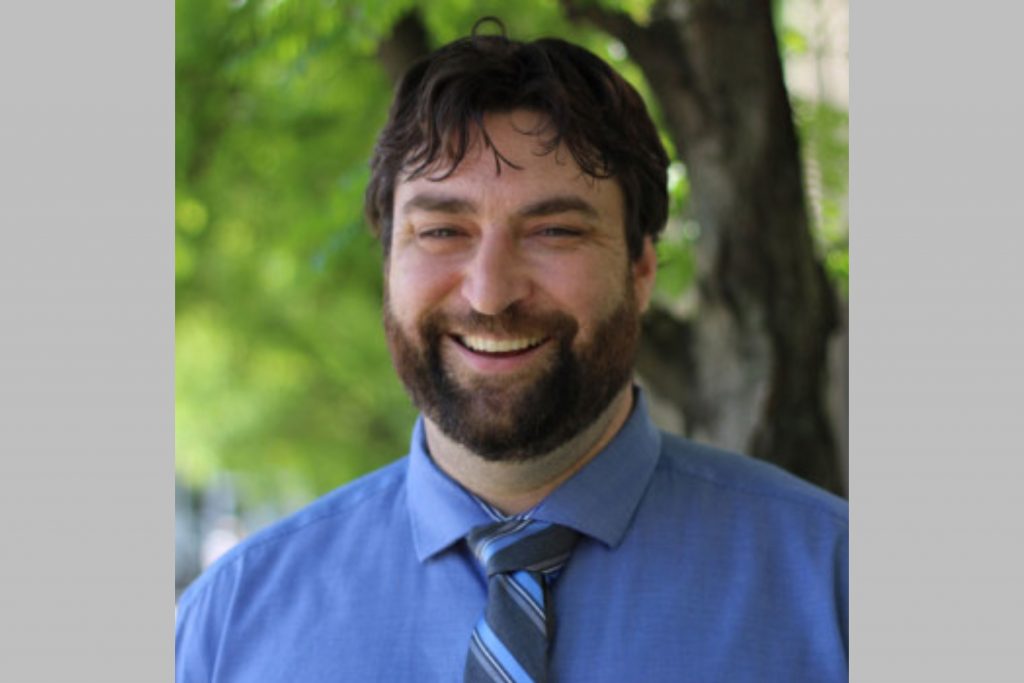In the Decoding Life series, we talk to geneticists with diverse career paths, tracing the many directions possible after research training. This series is brought to you by the GSA Early Career Scientist Career Development Subcommittee.
Neal Lemon currently serves as the Associate Director of Technology Licensing and Corporate Outreach for the Penn Center for Innovation and Perelman School of Medicine. He is focused on commercializing innovation with a particular emphasis on medical technologies and therapies. He has an MBA in International Business and a PhD in neuroscience. Neal switched between business and biology a few times before finally settling on technology transfer, where he can intersect these two interests.
What does a job in technology transfer look like?
The main focus of technology transfer is to interact with faculty and explain how they can take their ideas, experiments, and intellectual property to a state where they can be developed into something that can be sold as a product or service. Usually, this is accomplished by getting invention disclosures, protection through patents, and often either starting a company or licensing to a pre-existing company. Half of the job is interacting with the university community, faculty, and students, while the other half is interacting with industry. This is quite interesting because you can have a foot in the university and a foot out of it. You can gather a sense of early stage research in universities as well as the trends and what is required to turn intellectual property into something people can use. As a part of the bridge between universities and industry, there are options to partner with an existing large company to sponsor additional research and further advance intellectual property to the point of licensing, or even into a startup.
How did you come into your current position?
I did my undergraduate degree in biology and psychology, and I was really interested in neuroscience. Following undergrad, I continued with a medical research council scholarship in Canada, where I did neuroscience research for two years. I decided to stop after two years and complete my master’s instead of continuing to do my PhD. The work was very focused, and I wasn’t really keen on doing one specific type of research long-term. I decided to do an MBA at the University of Victoria and Handelshochschule (HHL) in Leipzig, Germany. After that, I took a position at Hewlett Packard working in finance. During this time, I found that what I really wanted to do was combine my neuroscience and business backgrounds. At that time, however, there weren’t many opportunities at that intersection.
I took a job at a bioinformatics startup and found myself at a decision point between continuing in finance or trying to go back to working in science. I was interviewing with people in both fields but decided to go back to Germany to the International Graduate School of Neuroscience to get my PhD. Following graduate school, I went back to Canada for a postdoc before taking a job between academia and industry working in commercialization. This brought me to my first position in technology transfer, where I have been since.
How do you use the skills that you gained in your academic training specifically in this position?
There are two different aspects to the application of academic training: knowledge and skills. The knowledge aspect of the training, especially on the neurophysiology side, is understanding material that is critical to interpreting invention disclosures and speaking about them knowledgeably. Everyone in technology transfer has an area where they are an expert, which is usually aligned with their PhD. It’s enjoyable to be able to dig deep into those topics.
The other aspect is the skills you develop while doing a PhD. If you think about when you started your PhD and the material was all new, the ability to educate yourself was very important. You develop the ability to search through PubMed and extract the information you need. In technology transfer you are doing the same thing, looking through patent records and commercial databases. So in this position, you need the skills to be able to learn by yourself.
What characteristics make you good at your job in technology transfer?
In many scientific career paths, you need to have a combination of curiosity and discipline. At least professionally, I think I have both of those characteristics. It’s debatable sometimes which trait is more important to make a good researcher. Is it more important that the person is disciplined or has a sense of curiosity? They intersect, though, as you also need motivation for discipline. Personally, I like to understand how things work and how to make things work better. I am interested in society and capitalism and how they work, and how ideas become realities. I think that level of curiosity to dig into the processes and systems of commercialization, in addition to the details of the technologies, is important for a job in technology transfer. However, like with everything, you need the discipline to not just find out interesting things but also use that knowledge and work to benefit others.
How does your life outside of your career influence your career?
You can work very long hours in this job. You also need discipline in saying “enough is enough.” The great thing about this position is that you should never be bored. There’s nearly an infinite amount of work to do through transactional work as well as the research side. Like in a lot of other careers, you could let it totally consume you, but it is important to have a life outside of work. When you’re finished working on something, it is good to take time to do something else so you don’t burn out. You could work 24/7 and feel that you continue to add value, but you get diminishing returns at a certain point.
How has your network shaped your career?
I’ve built a few different networks through my professional life, research, and business school. It is interesting to think of the Venn diagram of my networks, because I believe there is little overlap. I think this is good because I have a network of friends and professionals in technology transfer who have similar interests and abilities, as well as a network of friends that have no relation to the sciences or business at all. I even keep in contact with friends from college sports.
If you are looking at where you want to go in your career and set your sights towards something, start walking towards that. On the journey, you will meet people with similar interests to form a network.
What advice do you have for early career scientists who aren’t sure what to do next in their career?
Take an afternoon with a cup of coffee and a notebook, sit down, and think about what would make you happy professionally. What is really interesting to you? What kind of setting do you want to work in? Maybe it has nothing to do with what you did over the last five years at all, but take time to look into it. Then, see what concrete steps you need to take to do what you’re interested in. My advice is to take the time to think about what you like to do — don’t be paralyzed by the choice. Be prepared that you might go in different directions than what you’re doing now.
About the author:
Abigail DiVito is a member of the Early Career Scientist Career Development Committee and a Graduate Student at the University of Pennsylvania. She is currently researching reproductive arrest and germline aging, and hopes to work in intellectual property.
Learn more about the GSA’s Early Career Scientist Leadership Program.













